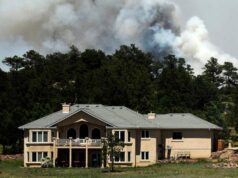
On Thursday, a new study came out warning that even if we stopped emitting carbon dioxide, the world has reached the “point of no return” for climate change. The paper claims that’s because Arctic permafrost—carbon-rich, permanently frozen earth made of rocks, water, and dead wildlife—is melting irreversibly, and it could continue to heat the planet for centuries by releasing carbon dioxide. Terrifying, right?
The only solution, the authors indicate, is to suck carbon out of the air with carbon capture, which is yet unproven to work at scale, or to employ even more dangerous geoengineering technologies. The study’s results and conclusions have been covered widely and a bit breathlessly, but here’s the thing: The analysis has some big problems.
“To be frank, the paper is crap that should not have passed any competent peer review,” Zeke Hausfather, a climate scientist and energy systems analyst, said. “It’s an interesting thought experiment, but its results should be taken with extreme skepticism until more complex Earth System Models produce similar results.”
The problems with the study begin with its title, which refers to the “melting of permafrost.” That’s a red flag because as Merritt Turetsky, an ecologist who directs the Institute of Arctic and Alpine Research at the University of Colorado, Boulder, noted, permafrost thaws rather than melting.
“Pockets of ice stored here and there within permafrost can melt,” she said. “But these are very distinct processes.” The distinction, she said, makes her think the researchers don’t really know what permafrost is.
G/O Media may get a commission
Even before getting into the body of the study, the authors credited made me lift my eyebrows. They’re not climate scientists, they’re business school professors. And it shows in the report, because their model is simplistic. Climate researchers have spent decades building out models that account for the intricacies of the climate. More complex models, for instance, better illustrate the ocean’s circulation patterns, which can have a large effect on warming in the long term. They also more accurately display how much water vapor is in the atmosphere, which is short-lived but common natural source of warming. The new paper’s model misses a lot of this.
“It doesn’t explicitly include things like large-scale movement of air and water in the atmosphere and ocean,” Kate Marvel, a climate scientist at the NASA Goddard Institute for Space Studies, said.
The new report also overestimates water vapor concentrations, which lead the model to run unusually hot. Yet another major flaw in the model also overestimates methane emissions’ warming potential. The authors claim that methane will be the chief driver of future temperature increases, but in doing so, they exaggerate the temperature increase that the methane concentrations in their model could produce.
More advanced models, said Marvel, are “more tethered to reality” in their illustrations of water vapor concentrations and the timeline on which Arctic ice is melting and permafrost is thawing. This lets them provide a more accurate picture of how and when these changes could create feedback loops where melting and thawing unleash more more greenhouse gas and thereby heat the planet. Due to these inaccuracies, the oversimplified model misrepresents how much warming we’d really see if we drew down our emissions immediately.
“Modern complex Earth System Models generally show minimal future committed warming after zero emissions, even taking our best estimate of future permafrost melt into account,” Hausfather said.
Specifically, the new report sharply contrasts with the most recent findings from the United Nations’ Intergovernmental Governmental Panel on Climate Change and the European Geosciences Union.
“Folks are missing that its a simple model created by non-experts,” he said. “I’m also worried that there is a bit of a bias to cover it given its purported dramatic findings.”
He noted that a 2019 meta-analysis of 18 Earth System Models, in fact, found that immediately stopping greenhouse gas emissions would drastically limit warming, but received far less coverage than the new paper.
To be clear, no climate experts are arguing that warming feedback loops aren’t a concern or that thawing permafrost releases methane. And it’s definitely not to say that we shouldn’t act to draw down emissions quickly. But Marvel said that by placing the focus on greenhouse gas from thawing Arctic ground, the authors’ suggestions for the future are all wrong.
“I want to be clear: thawing permafrost is likely to result in a net increase in atmospheric methane concentrations. And methane is a potent greenhouse gas. But methane concentrations are increasing sharply right now, and it’s not because of permafrost,” she said. “It’s because of the oil and gas industry and large-scale agriculture.”
It may be predictable to say, but it turns out we need to draw down our carbon emissions and phase out of oil and gas immediately. The necessary changes won’t be easy to push through. As a groundbreaking 2018 IPCC report said, they’ll require “unprecedented changes across all aspects of society.” But the alternative is much worse, even without the permafrost methane scare.
“If we manage to get our emissions all the way down to zero, falling atmospheric CO2 concentrations will more than offset any additional future emissions from permafrost melt,” Hausfather said.
Source: gizmodo.com








